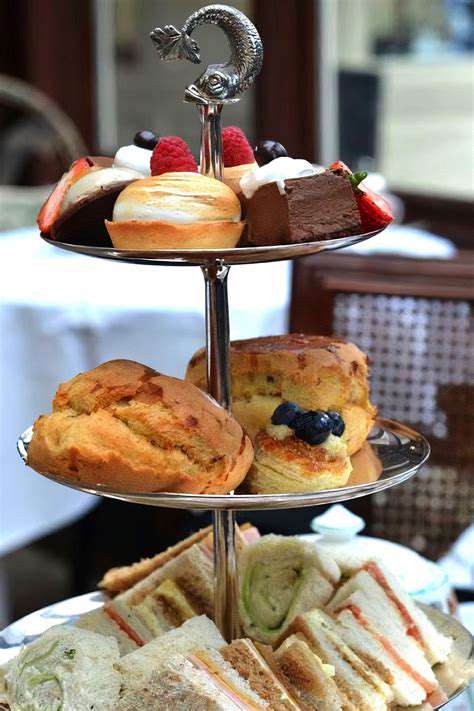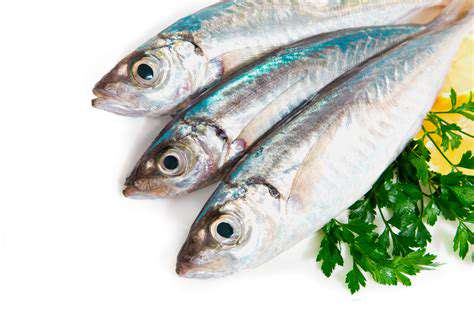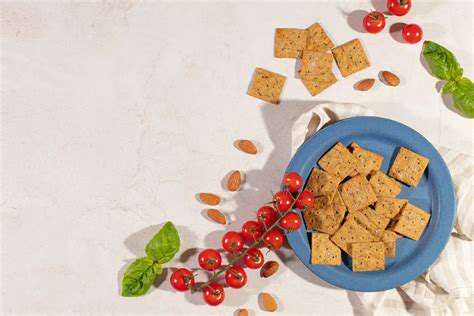Eating Habits in the UK: Pub Food and Afternoon Tea
A Historical Perspective on Pub Food
Traditional pub fare, often featuring hearty and affordable dishes, has deep roots in British culinary history. From the humble fish and chips to the comforting shepherd's pie, these dishes reflect the working-class origins of many pubs. These staples, often cooked with simple ingredients and robust flavors, were designed to be both filling and satisfying for patrons after a day's work, providing a crucial source of nourishment and community gathering. The availability of these dishes, often cooked in large quantities, further cemented their place within the pub culture and laid the foundation for the evolution we see today.
The Rise of Modern Pub Grub
The 20th and 21st centuries saw a significant shift in pub food, with a growing emphasis on quality ingredients, innovative preparation methods, and a desire to cater to a wider range of tastes. Pubs began to embrace fresh, locally sourced produce, while also experimenting with modern techniques to elevate their traditional dishes. This evolution was also driven by the changing demographics of pub-goers, with a desire for more diverse and sophisticated options alongside the classic pub favorites. This period marked a crucial transition in the way pubs viewed their role in the community, no longer just as places for simple meals but as destinations for culinary exploration.
Pub Food's Fusion with Global Flavors
In recent years, pub food has seen a significant influx of global culinary influences. This fusion has led to exciting new combinations of familiar flavors and textures. Dishes inspired by Asian, South American, and Mediterranean cuisines are now appearing on pub menus, reflecting the increasingly diverse populations of the UK. This trend not only caters to a wider range of palates but also adds a vibrant and exciting dimension to the pub dining experience, attracting new customers and invigorating traditional offerings.
The Importance of Quality and Freshness
Modern pub menus are increasingly prioritizing quality and freshness in their ingredients. This emphasis on sourcing locally and using fresh, seasonal produce is evident in many pubs, reflecting a growing awareness of sustainability and ethical food practices. The focus on high-quality ingredients, combined with innovative cooking techniques, elevates pub food to a new level of sophistication. This move towards quality ingredients also fosters customer loyalty and creates a more appealing dining experience, contributing to the evolving image of the pub as a destination for both casual and more sophisticated meals.
The Pub as a Culinary Destination
Today's pubs are often more than just places for a quick bite; they are becoming culinary destinations. Many pubs are investing in their kitchens, hiring skilled chefs, and offering sophisticated menus that cater to a range of tastes and dietary requirements. This evolution reflects a broader trend in the UK food scene, with pubs embracing a more sophisticated approach to dining. This transformation is creating a renewed sense of excitement and expectation for pub meals, highlighting the continued evolution of this beloved British institution.
Afternoon Tea: A Timeless Tradition

A Delicate Tradition
Afternoon tea, a quintessential British tradition, is more than just a light meal; it's a carefully orchestrated ritual of social interaction and indulgence. This meticulously crafted experience, usually served between 3 and 5 pm, encompasses an elegant atmosphere, delicate finger sandwiches, and a selection of exquisite pastries. It's a moment to pause, to socialize, and to savor the simple pleasures of life. It's a tradition that continues to delight and enchant.
The origins of afternoon tea are often attributed to the Duchess of Bedford in the mid-1800s. She, and others of her social standing, reportedly felt the need for a light meal between lunch and dinner. This need, combined with the growing appreciation for refined social gatherings, gave rise to the elegant custom that we know today.
Savory Delights
The savory components of afternoon tea are often the first to be enjoyed, setting the stage for the sweet treats that follow. These typically include a variety of small, exquisite sandwiches, often featuring combinations of delicate meats, cheeses, and vegetables. The fillings are carefully chosen to create delightful flavors and textures.
Beyond the sandwiches, you might find other savory options, such as miniature quiches or savory pastries. Each item is carefully prepared to complement the overall experience.
Sweet Sensations
The sweet treats are the heart of the afternoon tea experience, often creating a symphony of textures and flavors. From delicate macarons to rich scones, the selection is designed to excite the palate and delight the senses. These sweet treats are often accompanied by clotted cream and jam, further enhancing the overall experience.
The presentation of the pastries is just as important as their taste. Each item is meticulously arranged, creating a visually appealing display that enhances the overall experience. The artistry involved in creating these delightful treats is a testament to the dedication to quality and tradition.
The Ritual of Preparation
Afternoon tea is more than just a meal; it's a ritual. From the careful selection of tea leaves to the delicate arrangement of pastries, every aspect is designed to create a special moment. The preparation of the tea itself is a key part of the ritual, with the process often taking place in front of the guests.
The Social Aspect
Afternoon tea is a social experience, providing a chance for people to connect and enjoy each other's company. It's a chance to engage in conversation, to share stories, and to create lasting memories. The atmosphere is typically relaxed and convivial, encouraging interaction and fostering a sense of community.
The elegance of the setting, the delicate flavors of the food, and the opportunity for social interaction all contribute to the unique charm of afternoon tea. It's a timeless tradition that continues to appeal to people of all backgrounds.
Beyond the Basics: Exploring Regional Variations
Northern England: A Taste of Tradition
Northern England boasts a rich culinary heritage, often characterized by hearty, flavorful dishes reflecting the region's industrial past. Traditional pub fare in the north frequently features hearty stews, like Cullen skink (a creamy smoked fish soup), or flavorful casseroles, often incorporating locally sourced ingredients like lamb, beef, and root vegetables. These dishes are a testament to the region's agricultural roots and its commitment to wholesome, substantial meals. The emphasis is often on simple, well-prepared ingredients, rather than elaborate presentations, reflecting a focus on satisfying the appetite.
Beyond the stews and casseroles, you'll find a strong presence of fish and chips, a quintessential British dish. However, the variations in the north often include unique regional twists, like using specific types of potatoes or batter recipes. This demonstrates the enduring popularity of classic comfort food, while simultaneously showcasing the region's distinctive culinary identity.
Southern England: Sophistication Meets Tradition
Southern England, with its more affluent history, often sees a slightly different approach to pub food. While traditional fare like fish and chips and hearty pies are still prevalent, there's a greater emphasis on fresh, high-quality ingredients and a more refined presentation. Expect to find a wider variety of gourmet options, showcasing the region's access to diverse culinary influences and a focus on fresh, seasonal produce. This is a place where you might find innovative takes on classic pub dishes, alongside more substantial, refined choices.
The focus on quality ingredients often extends to locally sourced produce, creating a connection between the pub and its surrounding environment. This emphasis on fresh, high-quality ingredients contributes to a more sophisticated and refined dining experience, while retaining the core values of a traditional pub meal.
Scottish Highlands: Rustic Delights
The Scottish Highlands offer a unique culinary experience, with pub food often reflecting the region's rugged landscape and strong agricultural heritage. Expect hearty, rustic dishes featuring locally sourced game, like venison or grouse, often prepared with simple yet flavorful sauces and accompaniments. The use of wild ingredients, like mushrooms or berries, found in the surrounding hills, further adds to the unique character of the Highland pub experience. This focus on local, often wild, ingredients distinguishes Scottish pub fare from other regions.
Wales: A Blend of Influences
Welsh pub food offers a fascinating blend of influences, showcasing the country's rich history and diverse cultural heritage. While traditional Welsh dishes like Welsh rarebit and bara brith are present, you'll also find a significant number of pub staples, showcasing a mix of British and potentially more international culinary trends. This blending of influences creates a truly unique experience, making Welsh pub food a fascinating exploration of diverse flavor profiles. It's a testament to the region's openness to culinary ideas, while still holding onto its own traditional roots and local specialties.
Read more about Eating Habits in the UK: Pub Food and Afternoon Tea
Hot Recommendations
- Traditional Foods for Day of the Dead
- Food Etiquette in Italy: Pasta Rules!
- Best Family Friendly Restaurants with Play Areas in [City]
- Review: The Best [Specific Dessert] Place in [City]
- Top Ice Cream Parlors in [City]
- Traditional Foods for Halloween
- The History of the Potato in Ireland
- Best Vegan Pizza Joints in [City] [2025]
- Best Bakeries for Sourdough Bread in [City]
- Food Culture in Argentina: Asado and Wine











